Meet Supervan's super fan

From the first time that crowds felt the rumble of its Le Mans-winning V8 and watched it attack corners on three wheels, Supervan wowed and entertained with a unique mix of racing performance and Transit looks.
As Transit evolved, so did Supervan. But far from a quiet retirement in Ford's Heritage Collection or being dumped in an oily garage corner, Supervan went on to live a remarkable life even out of the spotlight.
This is the story of what happened after the crowds went home.
"Transit for sale. Low mileage, weekend use only..."
Andy Browne is a former Ford engineering apprentice and lifelong Ford enthusiast. The walls of his garage are covered in memorabilia and photos of the classic Thunderbirds and Mustangs he's owned and rebuilt over the past five decades in the UK.
His is already a car history that would get many fans drooling, but nothing Andy's owned is as rare as what he played with while still an apprentice living with his mum and dad.
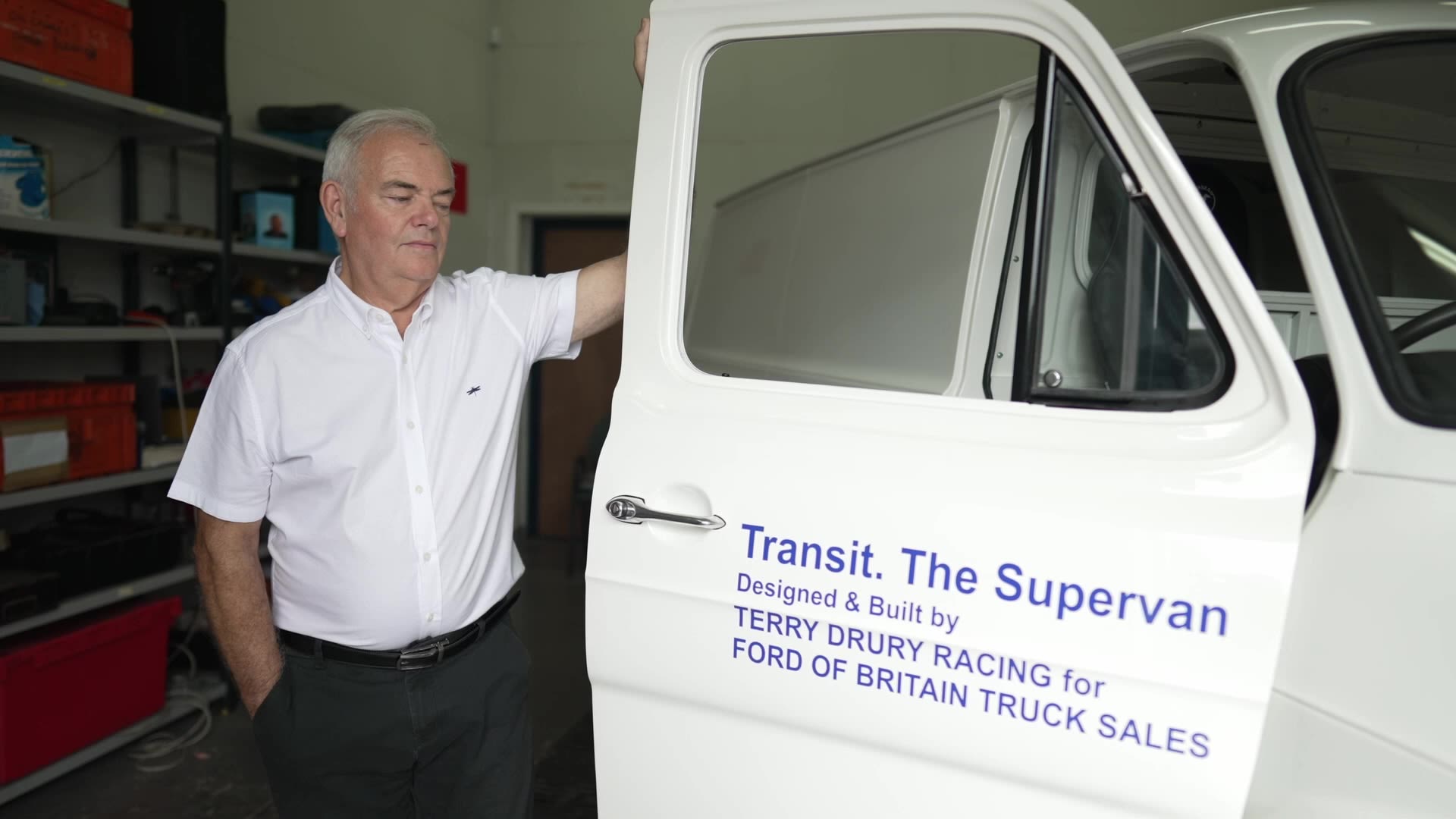
Andy knew Terry Drury, the original builder of Supervan. When the Supervan campaign ended, the Terry Drury Racing team stripped anything valuable off it, including the powertrain, for other projects. The body ended up among the remains that passed through a few hands before reaching Andy, who wanted to put life back into Supervan.
"I bought Supervan in late 1973 for £500. But there was nothing; all it had was a shell and four wheels. Nothing else. Luckily, I had access to the Ford machine shops so I could produce parts, and I bought a transaxle off Terry for another £500. Back then, I was a Ford apprentice on £5 a week!"
"I bought Supervan in late 1973 for £500... Back then, I was a Ford apprentice on £5 a week!"
Getting it on the road
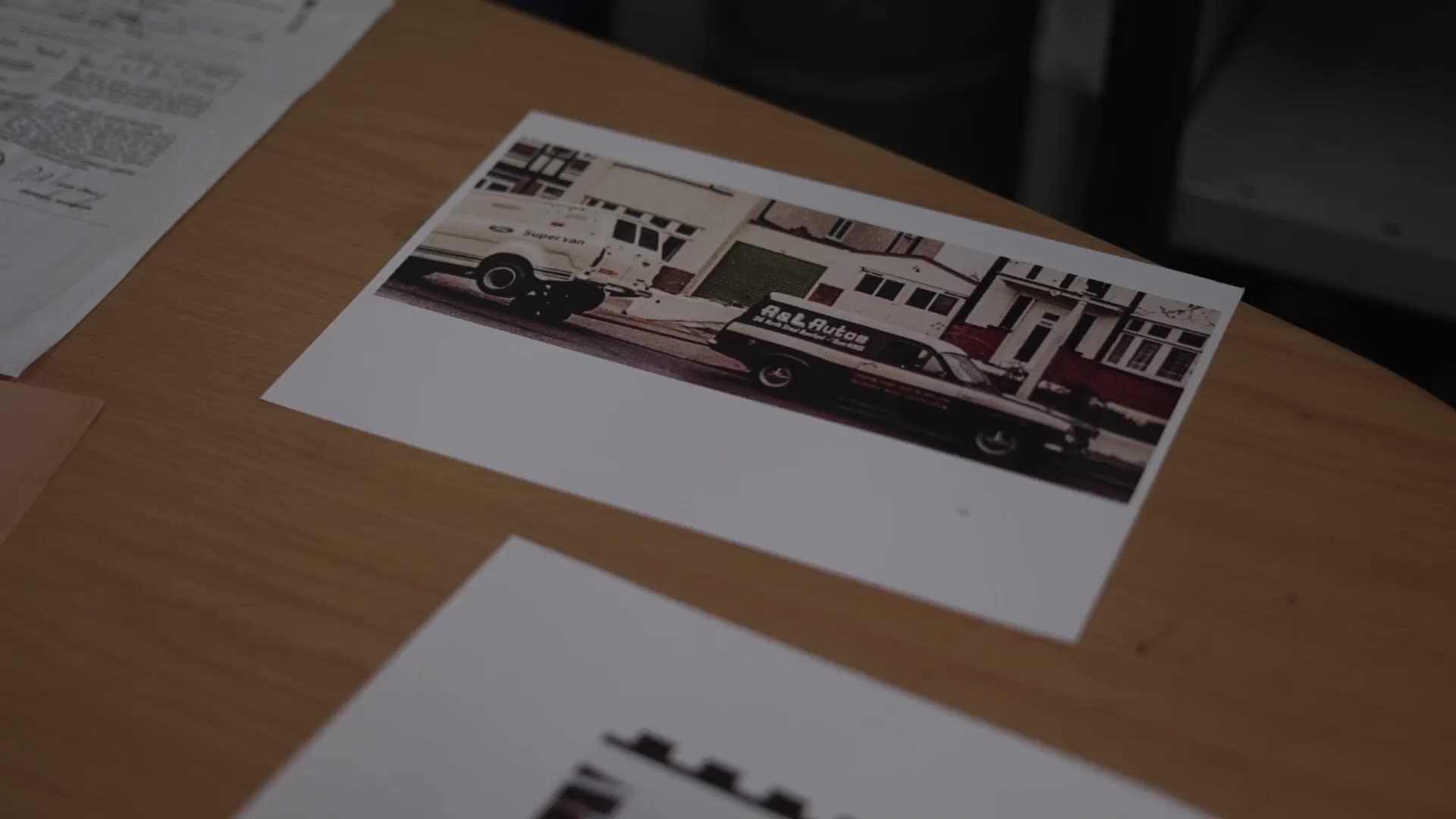
With almost two years of salary invested in the van parked outside his parents' house, Andy now had another issue to sort out.
Supervan had never been on the road.
"The body that Terry had got hold of was an experimental shell. It had never been registered, no duties paid, nothing like that. It was off the radar."
Andy had to get Supervan registered, taxed and insured before he could drive it. That meant convincing the various agencies that yes, his Transit van had a 4.7-litre V8 engine and that yes, a 19-year old apprentice was the registered owner and driver.
"I'd spent £500 on the van and another £500 on parts by this point. I spoke to a specialist insurer and you can guess how much my premium was..."
Andy still has the certificate to prove it.
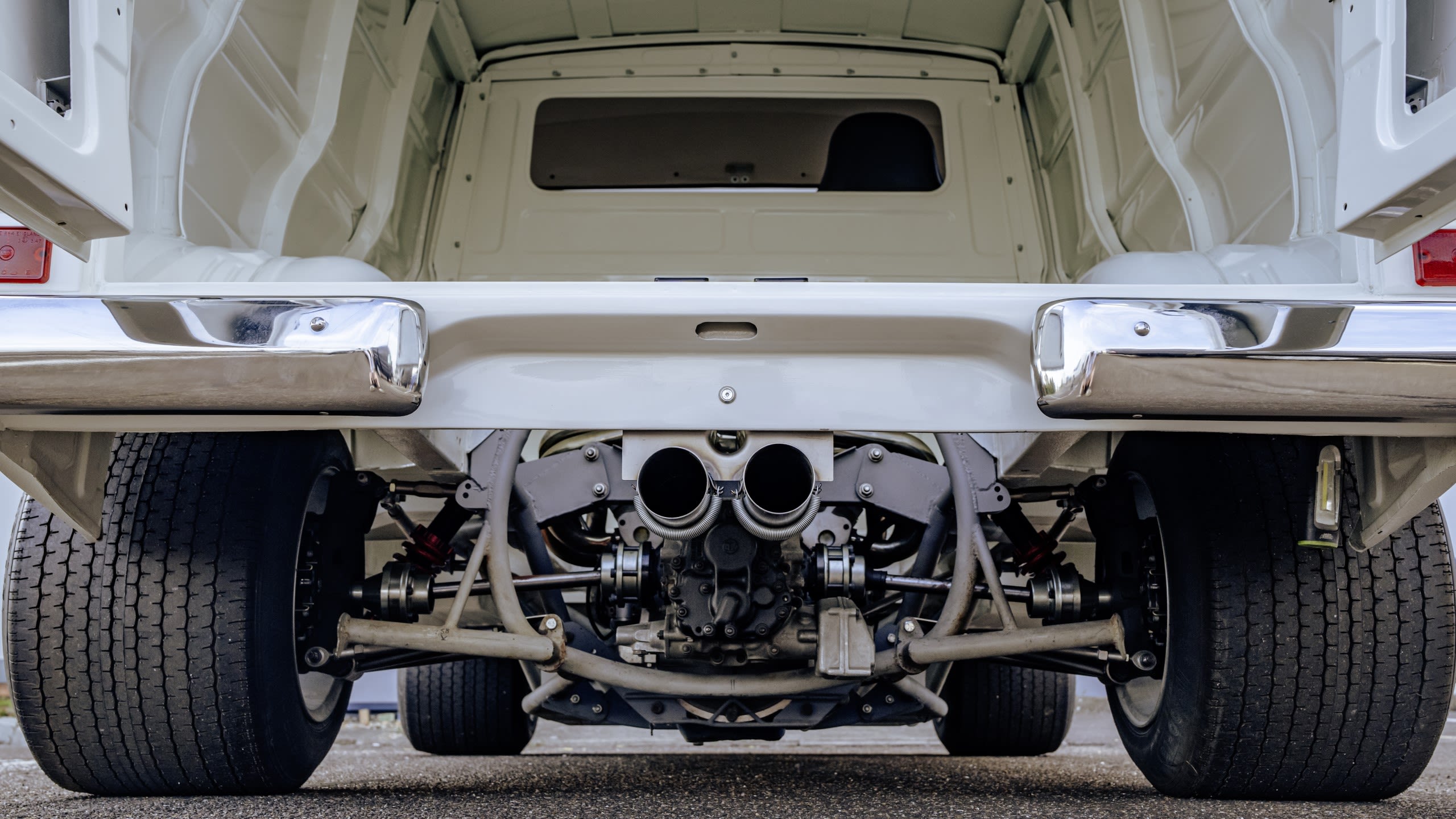
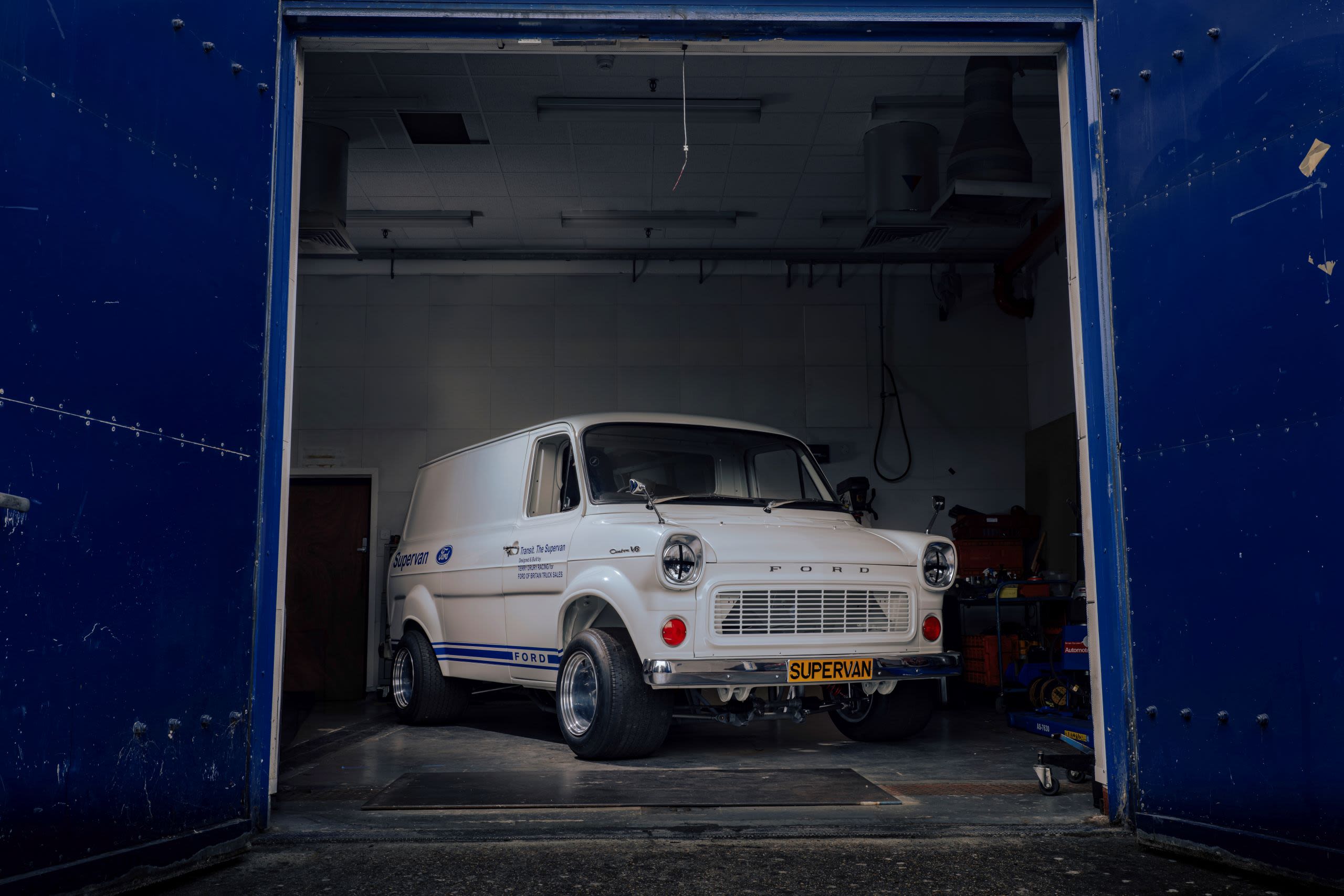
Bending the rules
It wasn't just paperwork that Andy grappled with to keep Supervan on the road: he often had to combine the skills he'd learned at Ford with after-hours machine workshop time to fix all kinds of issues.
"The original wheels were magnesium and kept cracking. Terry used to just fill the cracks with resin because Supervan was never on track for long!"
That might have been acceptable for quick circuit appearances, but for a van that was going to be used on the road, less so.
"I knew there was no way I could cope with that so one day I took the wheels into work with me. A guy called Charlie Mudge was our welding instructor and he was an absolute wizard at magnesium welding, so he got them fixed!"
Despite being fully taxed and insured, Supervan often used to attract attention. Andy was frequently questioned by various police officers keen to see this Transit that looked like a racing car. Some took inspections even further than that.

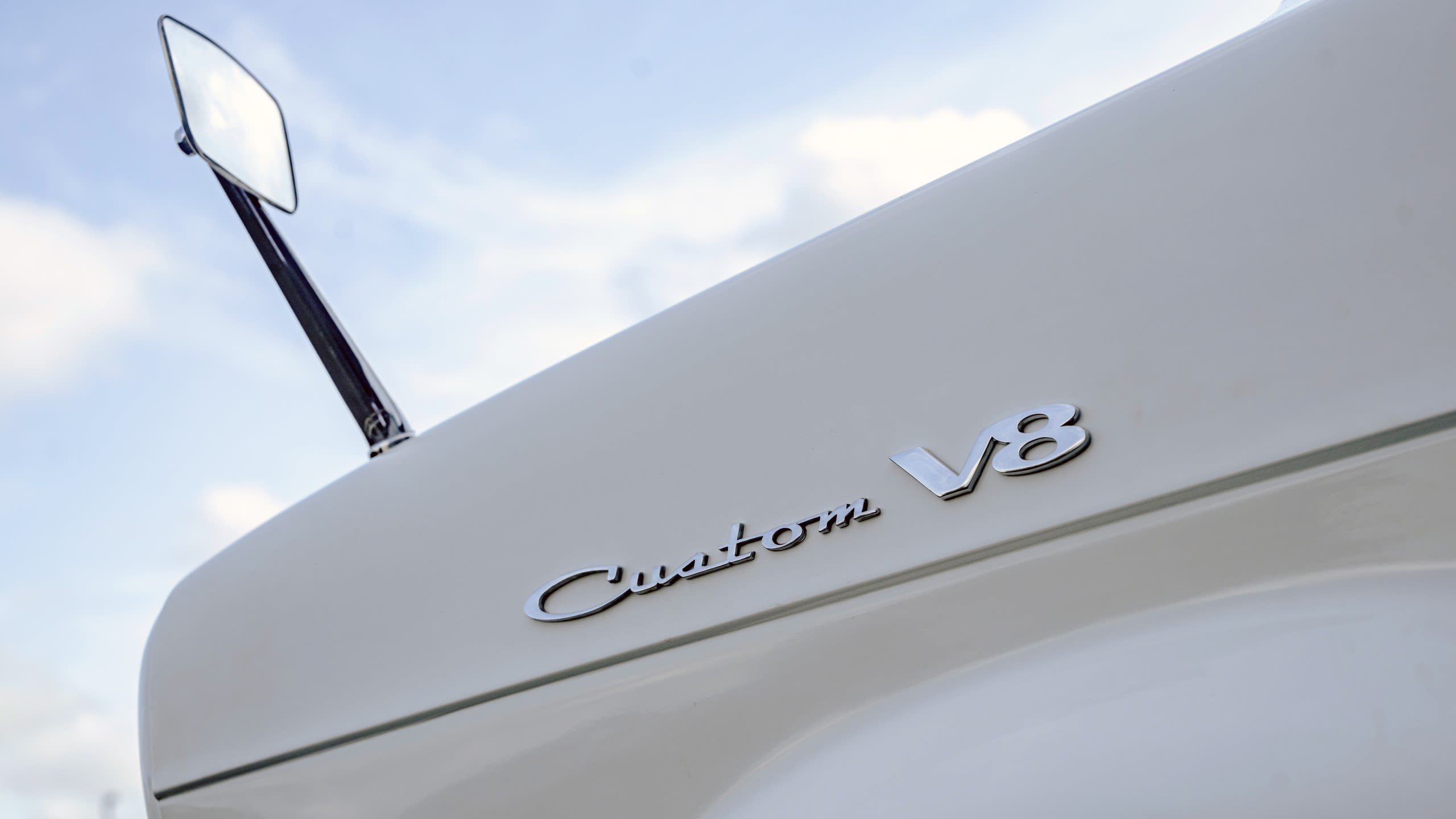
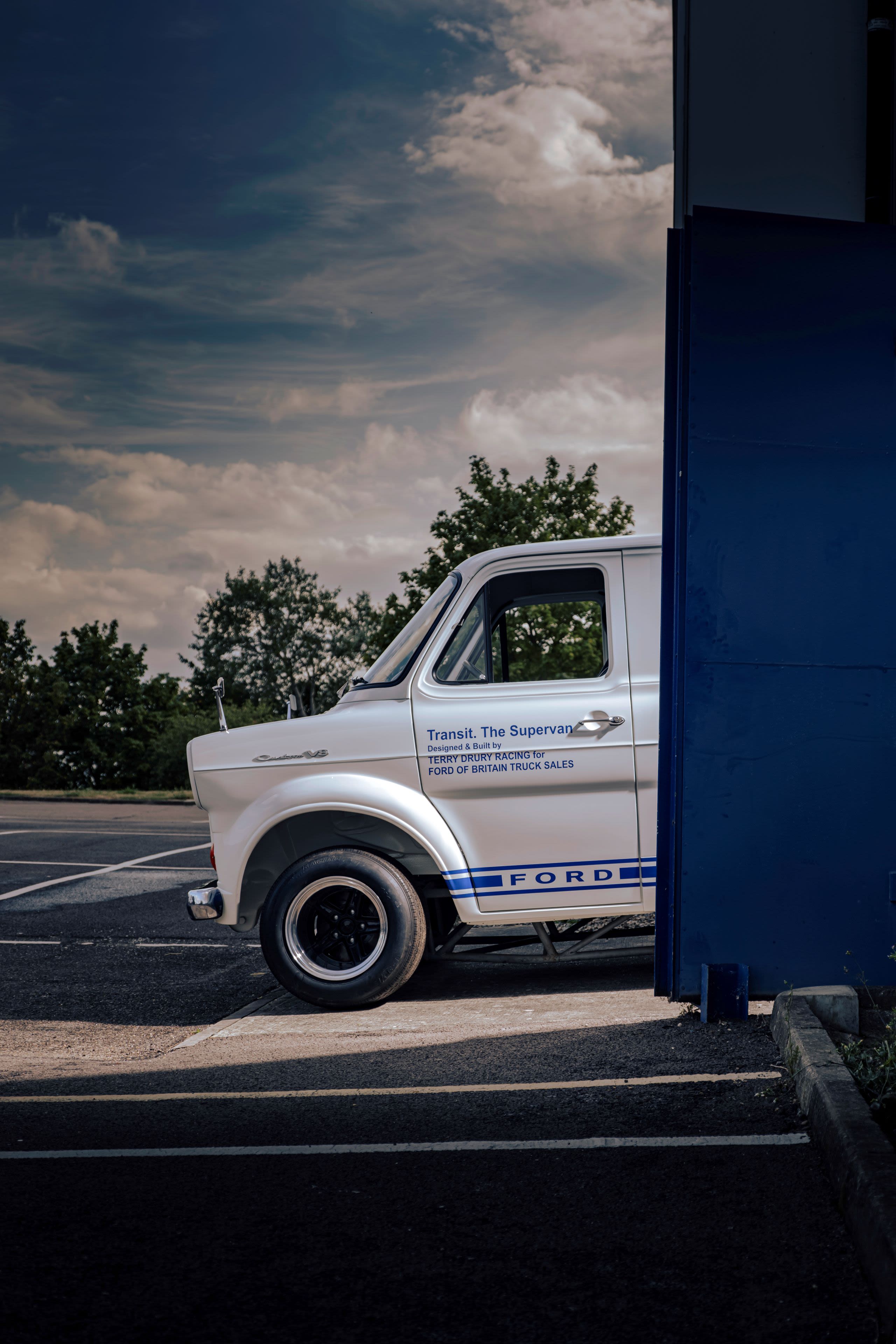

Letting Supervan go
Life, houses and family got in the way of Supervan ownership so Andy sold it on later in the seventies. By the time Ford revealed Supervan 2 in 1985, the original had been through several owners after Andy, and the trail had gone cold.
Rumours of Supervan being stolen or broken up didn’t stop infatuated fans around the world from building their own replicas and trying to hunt down the original.
Even decades after he’d sold Supervan on, Andy often answered the phone to excited strangers asking him to confirm if what they’d found was the Holy Grail of Transit vans.
Peter Lee from the Transit Owner’s Club remembers the enthusiasts’ obsessiveness too:
“You couldn’t go to any van show – any – and I’ve been to thousands, without someone saying that they’d found Supervan, seen Supervan, or that their mate had Supervan. It never, ever stopped.”
The callers were all wrong. Andy knew what the original looked like and he knew what changes he’d made during his ownership, such as fitting a different exhaust system that meant he had to modify parts of the body around the sills.
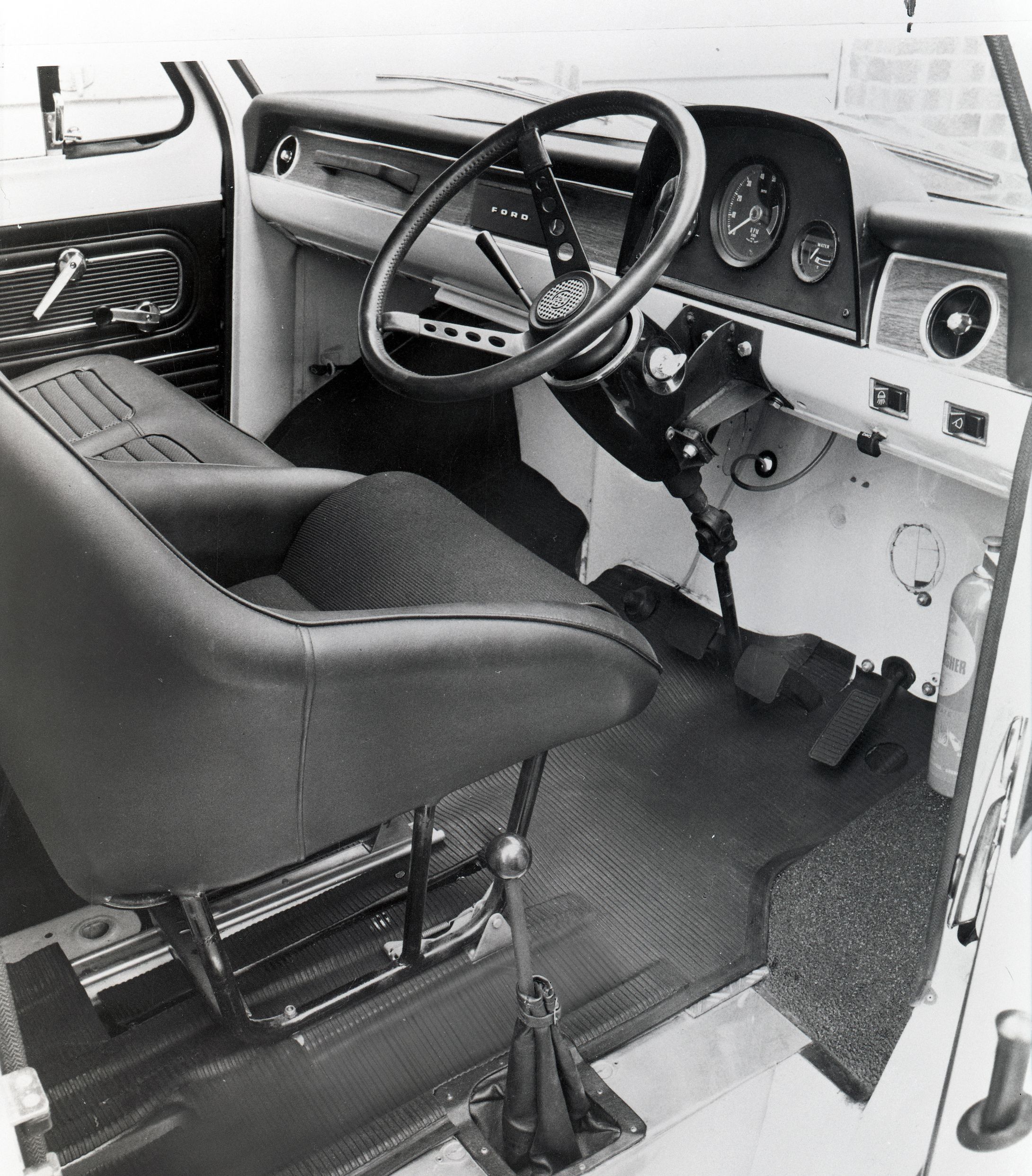
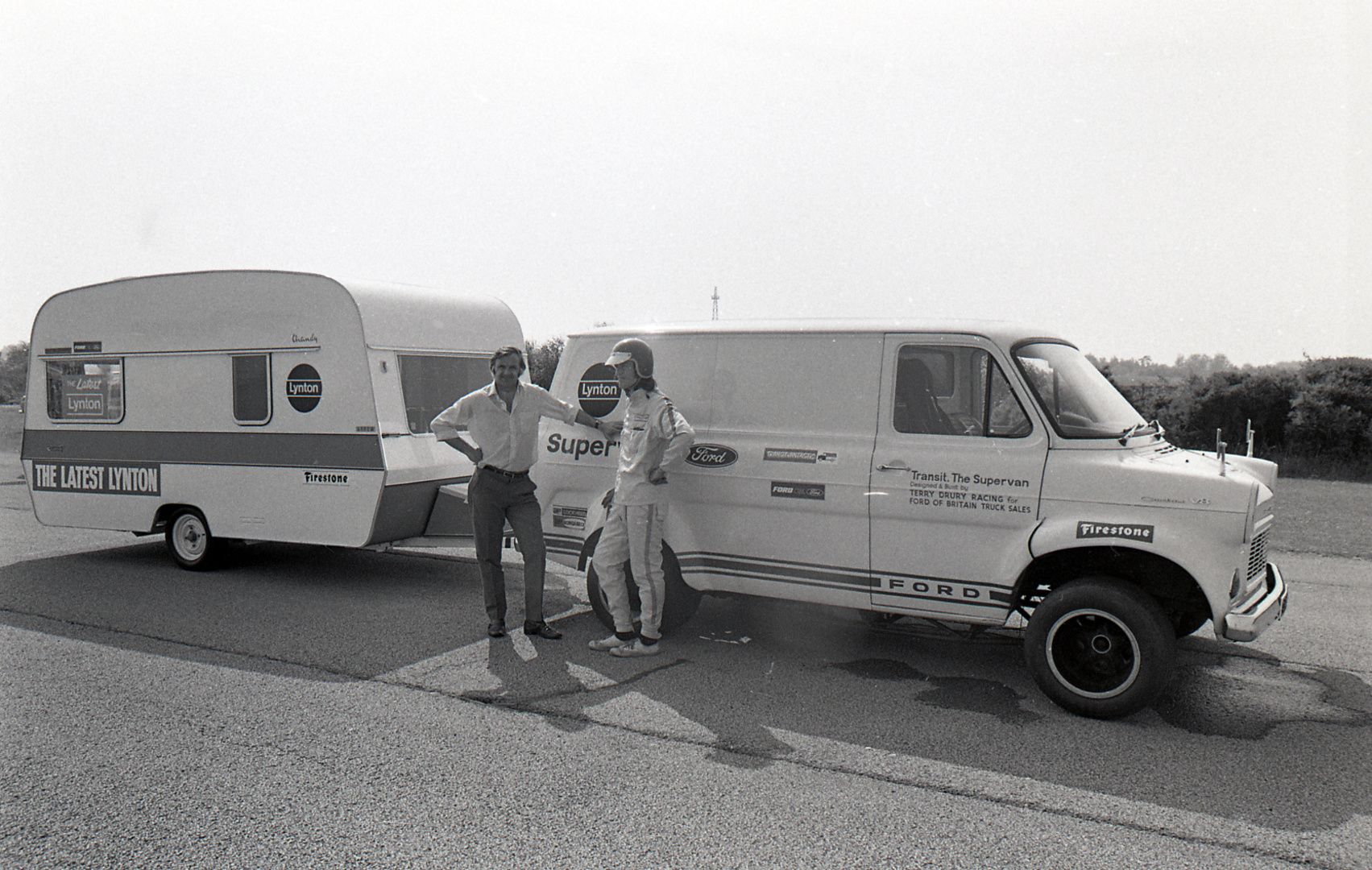
A tribute to friends
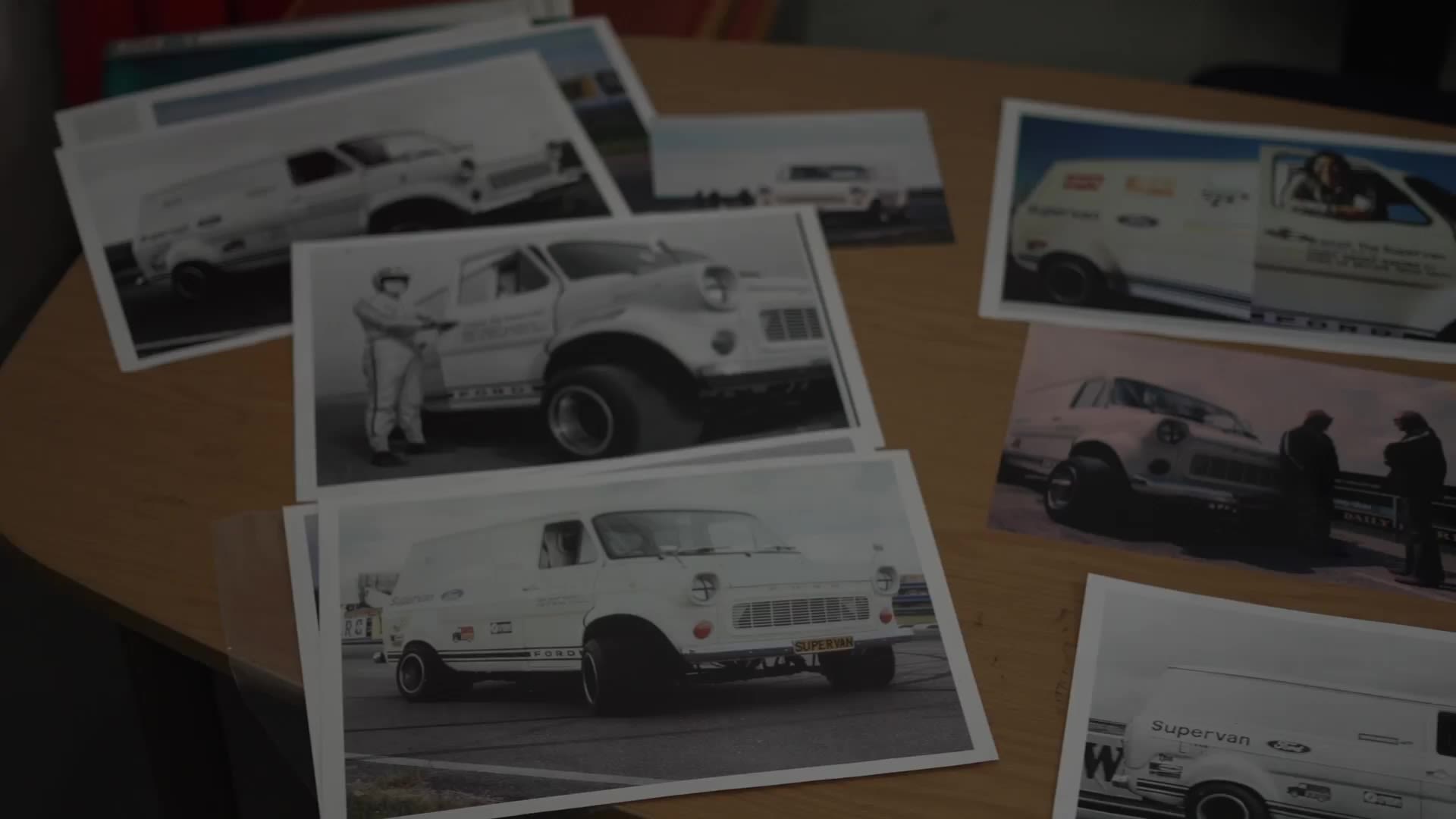
Andy eventually left Ford – but kept the passion and started a car collection – as he made a name for himself as a gearbox specialist. Years later, with an empty nest and a pension to spend, Andy decided to scratch the Supervan itch again in memory of the late friends and colleagues that were an integral part of his time with the Supervan.
“Originally, I wanted to build a replica. Then one day I got a call and somebody said to me they thought they knew where the remains of Supervan were. I’ve lost count, but this must have been at least the twentieth time, easily.
I went to see these remains, ran my hand under the sills and felt confident that it was the van that I’d owned. It wasn’t even a van at all – just a floor pan and a bit of bulkhead, and some parts of a chassis that had been cut.”
The plan immediately changed. Rather than build a replica Supervan, Andy bought the remains and began a sympathetic rebuild using original components. It needed a huge amount of work doing, but it wasn’t all on Andy’s shoulders.
Information began to drip in. Families of those involved in the 1971 campaign shared documents, photos and old tapes from spare rooms and attics across the world. The treasure trove of supporting material is as special and irreplaceable as the van itself.


Just as he did in 1973, Andy’s making a few changes so Supervan can be used on the road. You had to be slim to get into the driver’s seat back in the seventies as the racing wheels and suspension meant the wheelarches had to be widened so much that they stopped the doors from fully opening. This time, Andy’s got a longer to-do list, but he’s also got help:
“My youngest daughter is a 3D design engineer. When I started doing the research, she examined the photos I had and used her skills to reimagine how it would look for accuracy, right down to the rust marks. I told her I wasn’t going to make it that accurate!”
As probably the only person in the world to own Supervan twice, Andy’s well-placed to clear up a few of the legends that sprang up about it.
“One of the biggest myths about this is that it was built on a Ford GT40 – it wasn’t. Terry had access to a fire-damaged GT40 and the powertrain from that ended up being used in Supervan,” says Andy.
So Supervan wasn’t built on the legendary Ford GT40, which won at Le Mans from 1966 to 1969, but it wasn't just a Transit either.
The chassis was actually from an older Cooper Monaco racing car that the Terry Drury Racing mechanics had to widen so it could fit the Transit body properly. You can still see where the extra metal was welded in.
Although cutting up a multi-million pound racing car to build a Transit today might seem mad, Andy explains how things were different in the early seventies.
"Back then, a GT40 was just a tired, worn-out race car. It's rumoured some of the apprentices used to do doughnuts in the car park with them at the training centre in Harold Hill!"

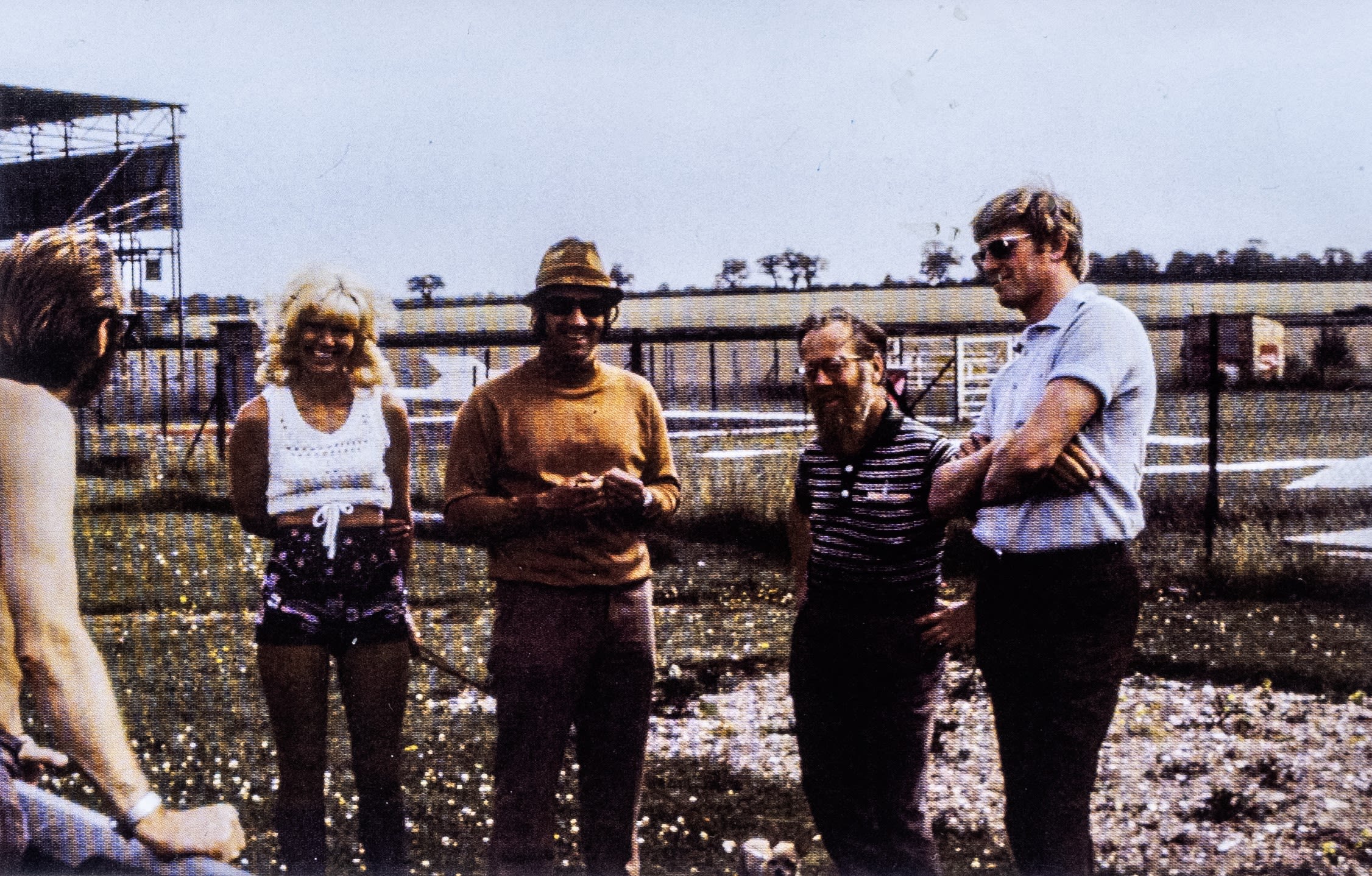

As much as Supervan is special to enthusiasts worldwide, it has a deeper meaning for Andy.
“I am Ford through and through. Ford gave me a transportable trade which has carried me through all my life as an engineer. I'll always be grateful to Ford.”
The training college staff who taught Andy his trade, the friends who worked on Supervan with him and the memories other people have of the era are fading fast: building up Supervan is Andy’s tribute to his trade, his mates and a fast, loud youth.
“There aren’t many of us left now! It’s just us in the old folks' corner who remember the Supervan and what an incredibly gifted engineer Terry Drury really was. His sons Jack and Steve had a great mentor. Terry and I were friends, I was with him three days before he passed away, and I can still feel him sitting on my shoulder."
When it’s finished, I want to recreate that photo of it up on three wheels at full speed and have people experience what we did back then. I can’t wait.”
Supervans through time...
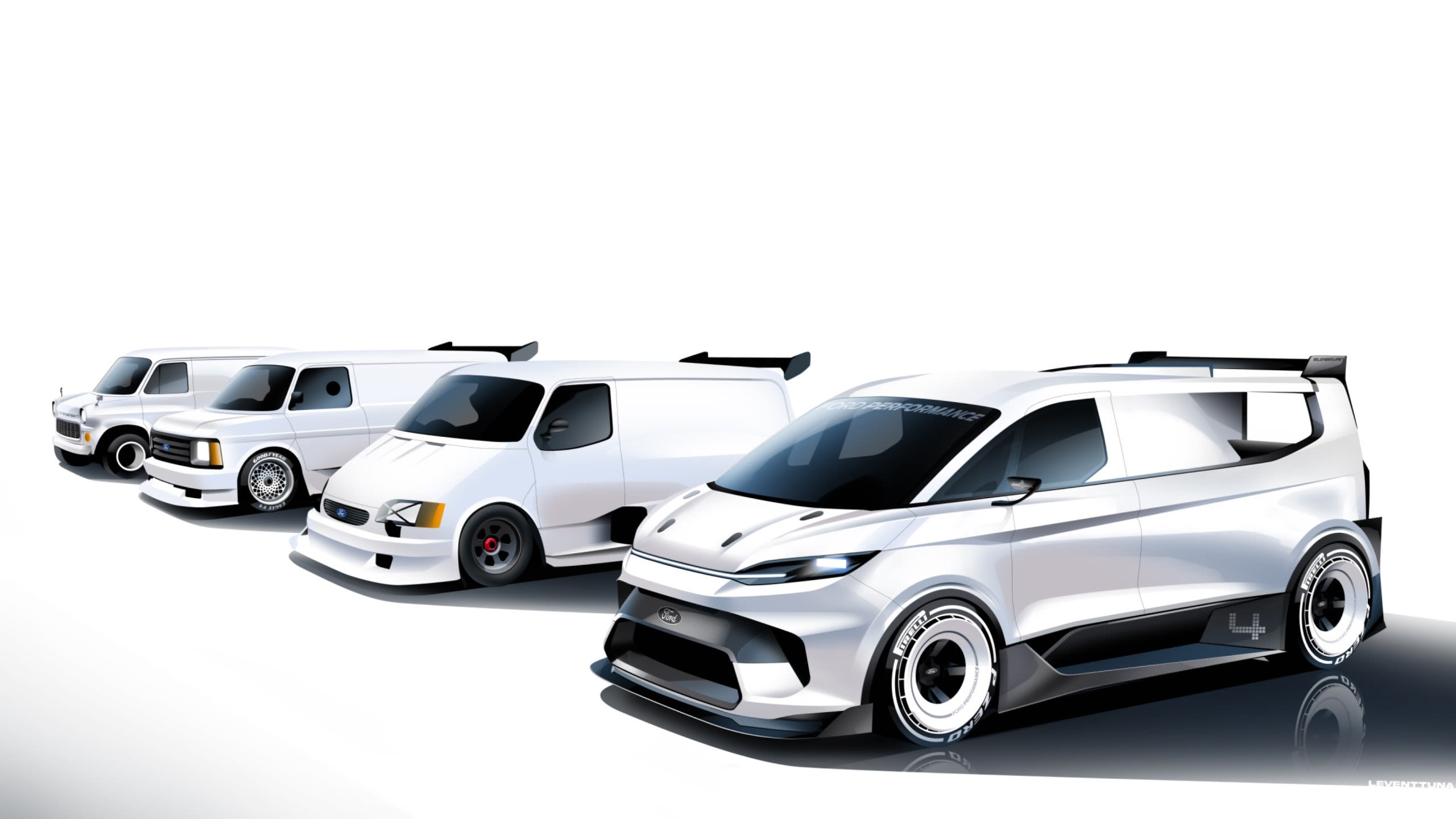
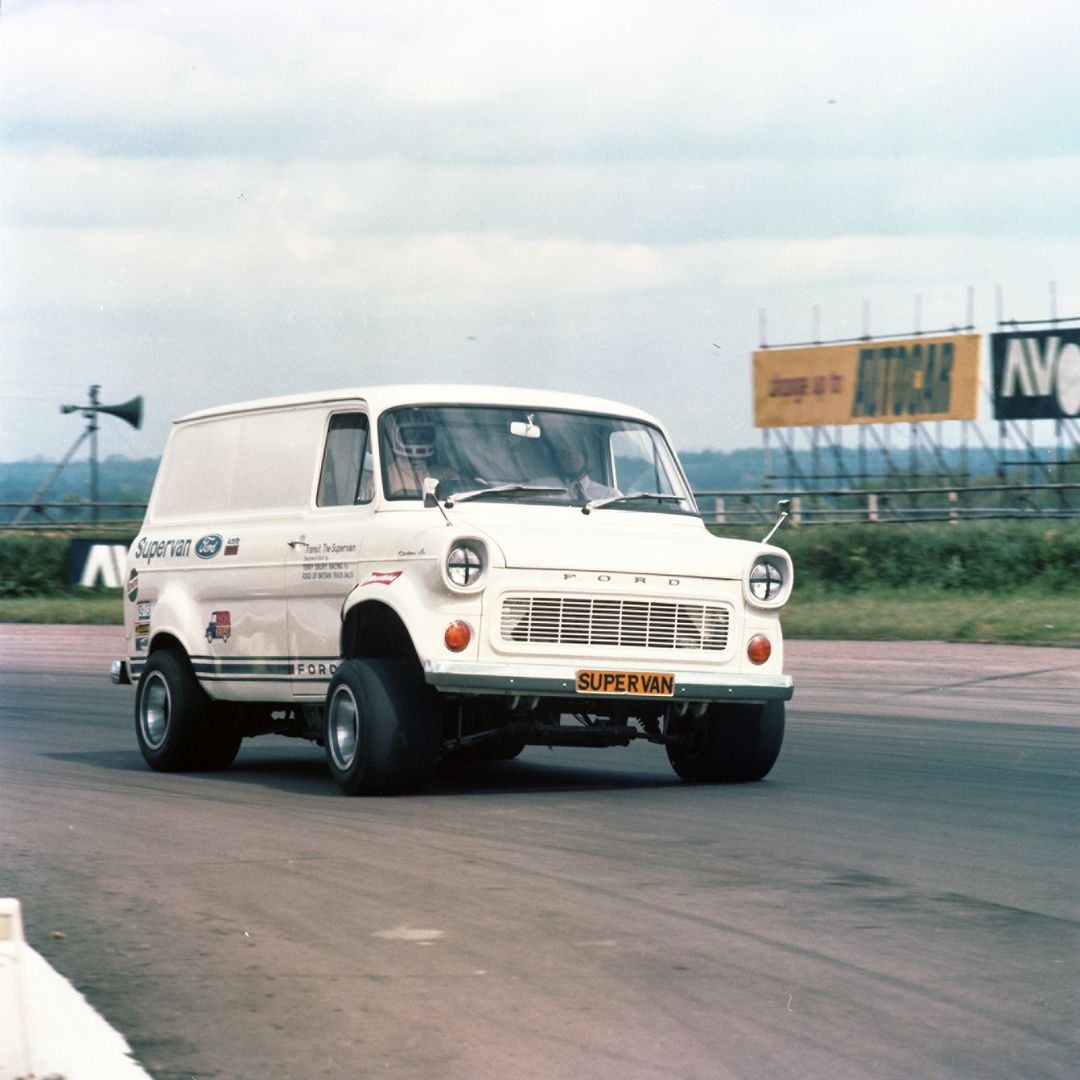

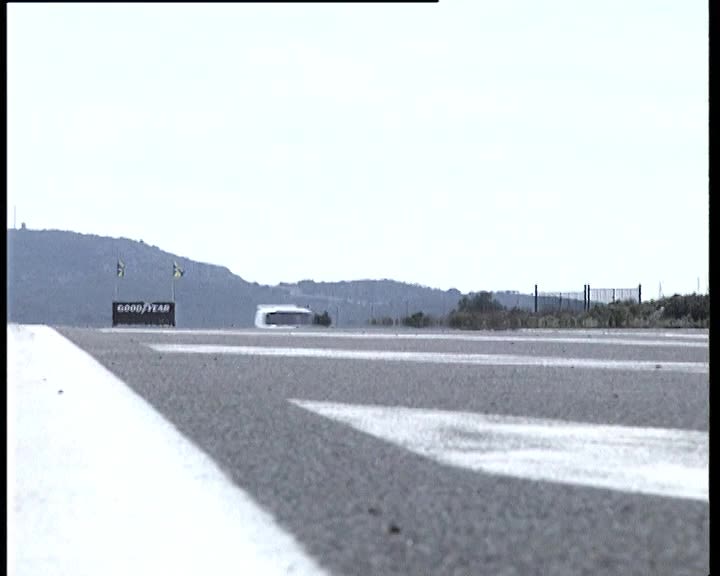

Supervan 1
Originally built by Andy’s friend Terry Drury as a marketing vehicle for Ford. It was shown off at racing events including the 1971 German Grand Prix, where it lapped the fearsome Nürburgring Nordschleife.
Supervan 2
A new Transit meant a new Supervan in 1985. The same recipe of racing chassis, huge engine in the load area and eye-catching livery made Supervan 2 a worthy successor to the original. Three-time Formula 1 World Champion Jackie Stewart called this 590 PS monster “certainly the fastest delivery van that I’ve ever had.”
Supervan 3
Ford rebuilt Supervan 2 with a scaled-down version of the latest Transit to promote its launch in 1994. Most Transits start with a key – this one needed an F1 team to start its enormously high-tech and powerful engine.
Ford Pro Electric Supervan
The most powerful Supervan yet introduced electric power to the family. After catapulting Ford Pro into existence with 2,000 PS at the 2022 Goodwood Festival of Speed, it evolved into the SuperVan 4.2 with less weight and improved aerodynamics to smash records at Pikes Peak in the USA, Australia’s legendary Mount Panorama Circuit and claim top honours up Goodwood’s famous hillclimb.